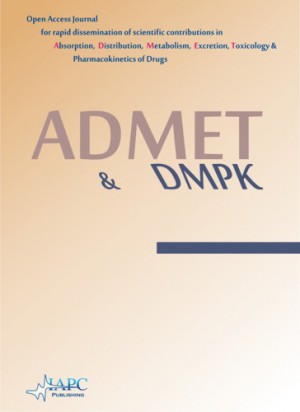
ADMET & DMPK
Yazarlar: Silvia Grandoni, Nicola Cesari, Giandomenico Brogin, Paola Puccini, Paolo Magni
Konular:-
DOI:10.5599/admet.638
Anahtar Kelimeler:Model Based Drug Development,PBPK models,Oral administration,Pharmacokinetics,Model-based prediction,In Vitro In Vivo Extrapolation
Özet: The interest in using physiologically-based pharmacokinetic (PBPK) models as a support to the drug development decision making process has rapidly increased in the last years. These kind of models are examples of the “bottom up” modelling strategy, which progressively integrates into a mechanistic framework different information as soon as they become available along the drug development. For this reason PBPK models can be used with different aims, from the early stages of drug development up to the clinical phases. Different software tools are nowadays available. They can be categorized in “designed software” and “open software”. The first ones typically include commercial platforms expressly designed to implement PBPK models, in which the model structure is pre-defined, assumptions are generally not explicitly declared and equations are hidden to the user. Even if the software is validated and routinely used in the pharmaceutical industry, sometimes they do not allow working with the flexibility needed to cope with specific applications/tasks. For this reason, some scientists prefer to define and implement their own PBPK tool in “open” software. This paper shows how to build an in-house PBPK tool from species-related physiological information available in the literature and a limited number of drug specific parameters generally made available by the drug development process. It also reports the results of an evaluation exercise that compares simulated plasma concentration-time profiles and related pharmacokinetic (PK) parameters (i.e., AUC, Cmax and Tmax) with literature and in-house data. This evaluation involved 25 drugs with different physico-chemical properties, intravenously or orally administrated in three different species (i.e., rat, dog and man). The comparison shows that model predictions have a good degree of accuracy, since the average fold error for all the considered PK parameters is close to 1 and only in few cases the fold error is greater than 2. In summary, the paper demonstrates that addressing specific aims when needed is possible by creation of in-house PBPK tools with satisfactory performances and it provides some suggestions how to do that.
Dergi editörleri editör girişini kullanarak sisteme giriş yapabilirler. Editör girişi için tıklayınız.